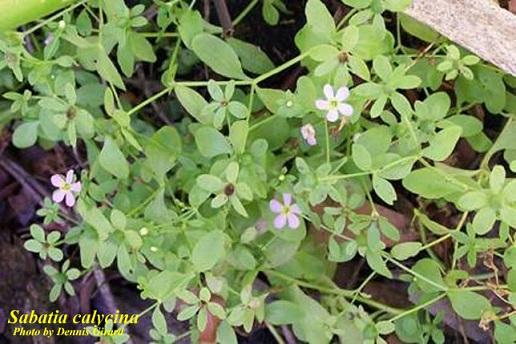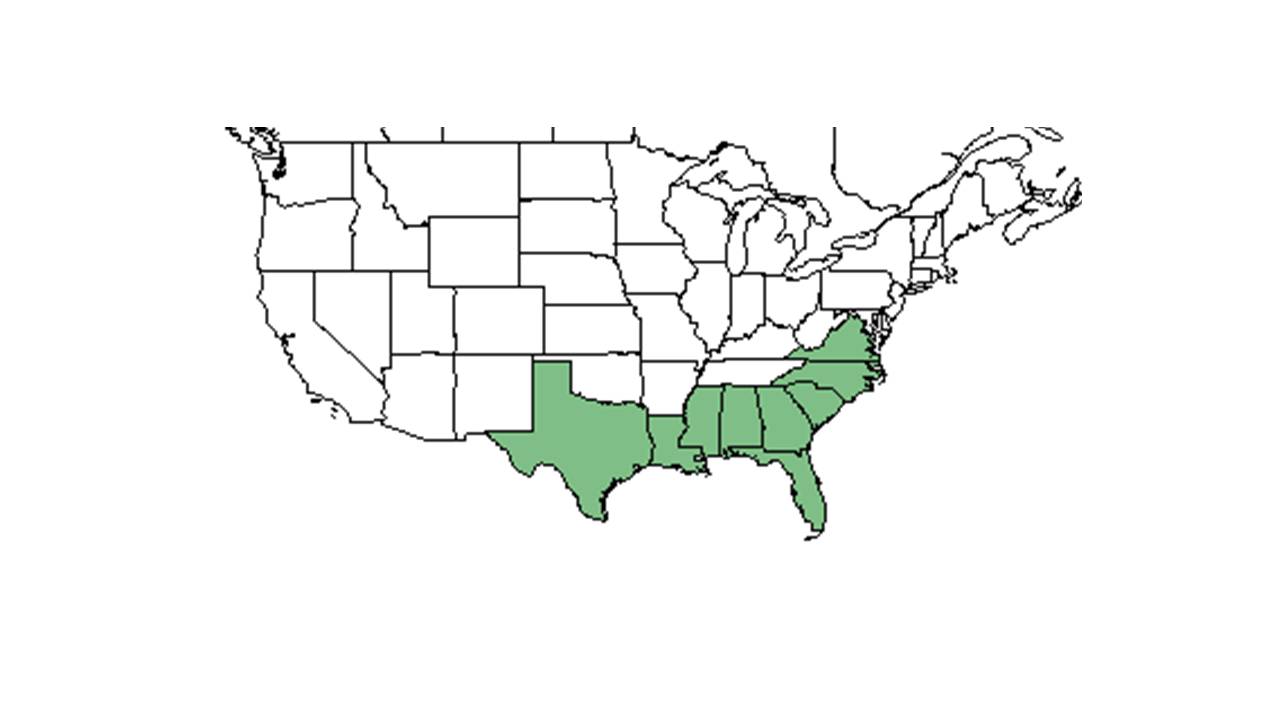Difference between revisions of "Sabatia calycina"
| Line 18: | Line 18: | ||
}} | }} | ||
| − | Common | + | Common names: Coastal rose gentian, Coastal rose-pink |
==Taxonomic notes== | ==Taxonomic notes== | ||
Revision as of 16:46, 15 September 2016
| Sabatia calycina | |
|---|---|

| |
| Photo by Dennis Girard, Atlas of Florida Vascular Plants | |
| Scientific classification | |
| Kingdom: | Plantae |
| Division: | Magnoliophyta – Flowering plants |
| Class: | Magnoliopsida – Dicotyledons |
| Order: | Gentianales |
| Family: | Gentianaceae |
| Genus: | Sabatia |
| Species: | S. calycina |
| Binomial name | |
| Sabatia calycina (Lam.) A. Heller | |

| |
| Natural range of Sabatia calycina from USDA NRCS Plants Database. | |
Common names: Coastal rose gentian, Coastal rose-pink
Contents
Taxonomic notes
Description
"Glabrous, perennial or annual herbs with erect or ascending stems. Leaves opposite, entire, sessile. Inflorescence terminal, cymose. Calyx 5-13 parted, lobes united at bae, those of first flowers longest, smaller on later flowers; corolla rotate white or pink with yellow eye, lobes 5-13, tube becoming membranous and persistent around the capsule. Capsule ovoid to ellipsoid; seeds small, alveolate." [1]
"Perennial with short rhizomes and erect stems. Stems slightly quadrangular, 1-4.5 dm tall. Basal leaves absent, but leafy basal offshoots often present; stem leaves elliptic, 2-7 cm long, 0.5-2.5 cm wide, acute. Inflorescence diffuse, branches alternate. Calyx lobes 5-6, rarely 7, oblanceolate to elliptic, foliaceous, usually variable in length and width in each flower, 0.7-3 cm long, 1-7 mm wide; corolla lobes pale pink to whitish, oblanceolate, usually shorter than the sepals, 7-15 mm long, 4-7 mm wide; filaments 2-4 mm long; stigmas 4-5 mm long, style 0-2 mm long; seeds olive-brown, 0.5-0.6 mm long." [1]
Distribution
Ecology
Habitat
In the Coastal Plain in Florida, S. calycina can be found in floodplains, clearings along floodplains, hydric hammocks, riparian mixed hardwood communities, mucky soil of spring runs, wooded areas along rivers, hardwood swamps, and pine-palm woodlands (FSU Herbarium). Soils include sandy loam, moist loam, and loamy sand (FSU Herbarium).
Associated species include Acer, Taxodium, Nyssa, bald cypress, American elm, and dwarf palmetto (FSU Herbarium).
Phenology
It has been observed to flower in June and October and fruit in June, July and October (FSU Herbarium).
Use by animals
Studies conducted with animals
This species of Sabatia is not preferred by fire ants. [2] Cumberland (2013) set up a cafeteria-style experiment and presented the Sabatia seeds to the fire ants and saw that the seeds were discontinued due to lack of interest by the fire ants.
Conservation and management
Cultivation and restoration
Photo Gallery
References and notes
- ↑ 1.0 1.1 Radford, Albert E., Harry E. Ahles, and C. Ritchie Bell. Manual of the Vascular Flora of the Carolinas. 1964, 1968. The University of North Carolina Press. 838. Print.
- ↑ Cumberland, Margaret S. and L. Katherine Kirkman. 2013. The effects of the red imported fire ant on seeds fate in the longleaf pine ecosystem. Plant Ecology 214:717-724.